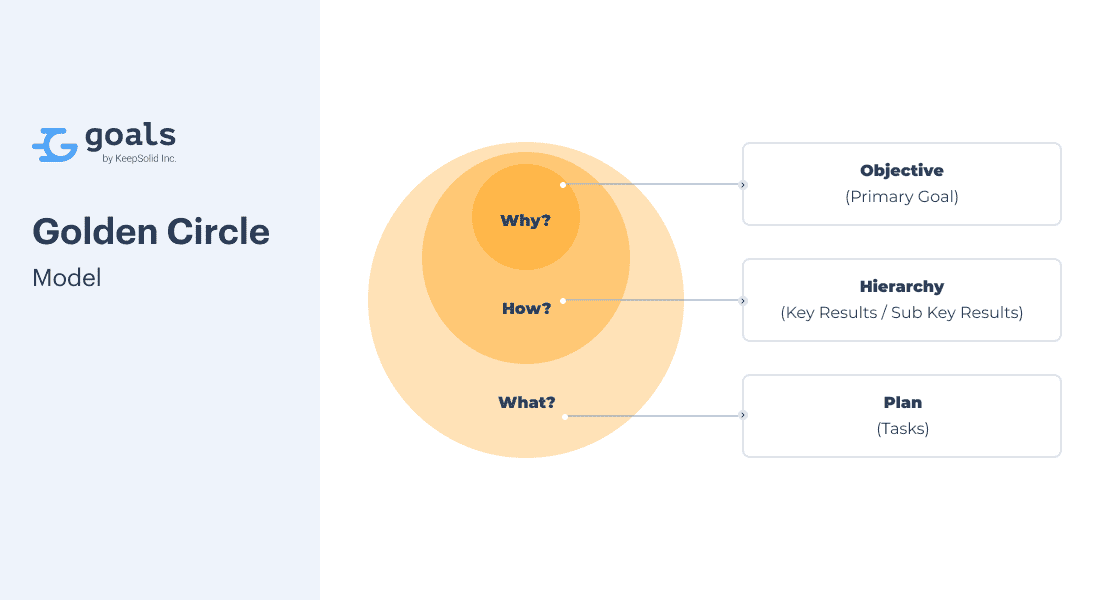Why, How, What
Understanding the reason why you’re doing something is in itself a rich source of motivation.
Most employees will probably be able to tell what they’re doing. Some can also explain how to do it, considered that a business analysis has been previously conducted and this choice has been made by the management.
However, when it comes to why they’re doing it, why spend their time and resources on it - far less employees will have the same clear understanding. Yet, as we’ve mentioned earlier, the whys - the reasoning - is key for employee engagement and motivation.
To answer why a team does something is not about the expected results (e.g. profits), but about the point of their work in general. It’s about what team members believe in, and how well they understand where specific tasks and objectives come from.
Golden Circle Philosophy in Goals by KeepSolid
The Golden Circle model, generally speaking, explains how to motivate people through inspiration rather than manipulation. Its principles are built around how our brains make decisions. The Golden circle model helps improve product development, sales, leadership, corporate culture, marketing, hiring. It also creates the momentum that will turn business ideas and goals into specific activities and plans.
According to the Golden Circle principles, to efficiently plan and reach objectives, management should focus on answering the Why, How, and What as described below. After that, they should share these answers with all stakeholders (especially the immediate executants) and ensure they know, understand, and acknowledge them.

Goals by KeepSolid is designed around making the Whys clear and comprehensible to everyone on the team. All activities are represented as Action Plans that consist of Key Results and their respective Tasks. Acton Plans always have concrete relevant Objectives at their center.
Together, a single Objective, its Key Results, and their Tasks make up an Objective Tree. Each object on an Objective Tree has its set of Key Success Factors (KSFs). Beside other uses, KSFs show the dependencies between objects and explain why specific works are important in the grand scheme of things.


